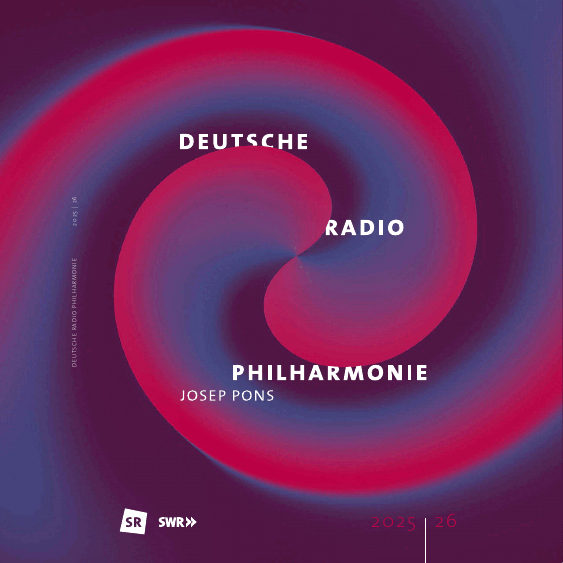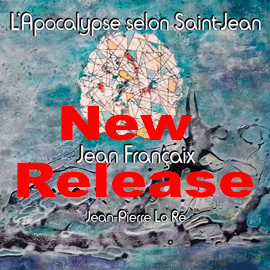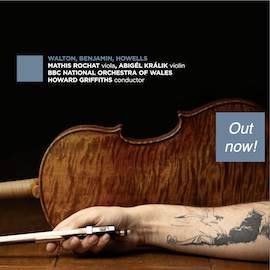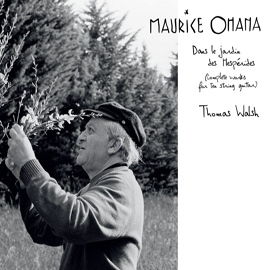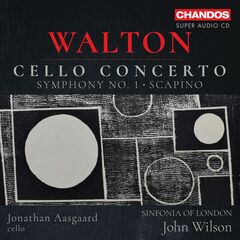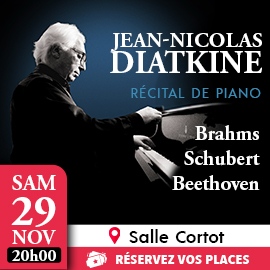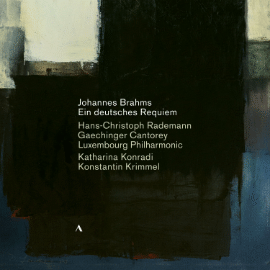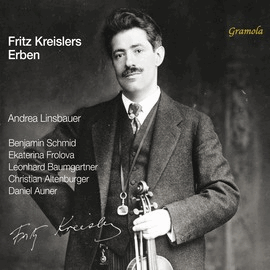Die Überschrift stimmt zwar nicht durchwegs für den Lebenslauf von William Walton, aber die englische Presse schrieb wiederholt Begriffe wie “skandalös” und “beunruhigend unausgewogen”. Am Ende kamen auch positive Notierungen dazu, wie für die erste Symphonie und die Scapino Ouvertüre. Beim späten Cellokonzert kehrte die herablassende Würdigung zurück. Der Wert dieses Werks wurde erst nachträglich anerkannt.
Die in der sinfonischen Tradition stehende Symphonie hat das Scherzo an zweiter und den langsamen Satz an dritter Stelle. In diesen beiden Sätzen kommen in der Musik die starken Emotionen aus einer schwierigen Beziehung zum Schwingen. Der vierte Satz hatte sich beim Schaffensprozess lange als Hindernis entpuppt, bis Walton dem Ratschlag folgte, eine Fuge zu verwenden, die sozusagen den Knoten platzen ließ.
Die Sinfonia of London wird von John Wilson zu einem tiefgründigen, opulenten Spiel angeregt, dass die Energie des Werkes herausplatzen lässt. So werden auch die Gefühlswelten des Andante con malinconia nachdrücklicher beschrieben. Während der Anfang des Werkes noch ein wenig neutral im Klang dargeboten wird, erlebt das Finale trotz des als Maestoso gekennzeichneten Tempos ein spannende und wirkungsvoll abgestufte Deutung, die die lebensbejahende Seite der Musik in den Vordergrund stellt und die fugierte Schreibweise durch kraftvoll belebtes und rhythmisch geprägtes Spiel nicht als akademischen Stil zeigt.
Die Scapino Ouvertüre zeigt die Mischung seines überschwänglichen frühen Stils mit seiner späteren neoromantischen Lyrik in gelungener Mischung. Um die Qualitäten amerikanischer Orchester wissend, schuf er eine inspiriert virtuose Partitur. Scapino, als Vagabund eine Nebenfigur der Commedia dell’arte, bietet ein kapriziöses Sujet, was das Orchester gekonnt, launig expressiv um und würzt mit Ironie umsetzt.
Das Konzert für Violoncello und Orchester wird hier von Jonathan Aasgaard, Solocellist des Orchesters, gespielt. Wenn auch das Konzert aus drei Sätzen besteht, so folgt es doch der bei Walton üblichen Form mit einem moderaten ersten Satz, dem ein schnelleres Scherzo folgt. Am Ende steht ein mit Thema und Variationen betitelter Satz. Das lange Eröffnungsthema bietet mit seiner Chromatik und der mehrdeutigen, instabilen Tonalität einen verführerisch liebevollen Einstieg, der dem warmen und weich artikulierenden Spiel des Solisten entgegenkommt und zu schmeichelndem Spiel anregt.
Mit dem emotionalen Kern (Allegro appassionato) des scheinbaren Scherzos wird die emotionale Kraft hervorgehoben. Aasgaard weiß das energiegeladene Thema auch lyrisch auszukosten. Die leichte und transparente Orchesterbesetzung führt zum Ende in eine virtuose Darbietung des Solisten.
Im dritten Satz lässt Aasgaard das kunstvolle Thema in der hohen Lage des Cellos über dem Pizzicato der Streicher aufblühen. Ein Solo führt zur ersten Improvisation, in der eine Melodie des Cellos im Triolenrhythmus gegen das Orchester steht. Aasgaard nimmt die Möglichkeit der virtuosen Darbietung in der zweiten Improvisation an, die er selbstbewusst und elegant darstellt. Die vierte Improvisation wird für das Cello solo mit rhapsodischen Elementen und wechselnden Tempi noch mal zur großen Bühne, bevor das Werk in der Urfassung verhalten endet.
While the headline does not entirely apply to William Walton’s biography, the English press repeatedly wrote terms like « scandalous » and « disturbingly unbalanced. » In the end, there were also positive comments, as for the First Symphony and the Scapino Overture. With the late Cello Concerto, the condescending appreciation returned. The value of this work was only subsequently recognized.
The symphony, which follows the symphonic tradition, has the Scherzo in second place and the slow movement in third. In these two movements, the strong emotions arising from a difficult relationship in the music resonate. The fourth movement had long proven to be an obstacle in the creative process until Walton followed the advice to use a fugue, which, so to speak, allowed the knot to be placed.
John Wilson inspires the Sinfonia of London to profound, opulent playing that allows the work’s energy to burst forth. The emotional world of the Andante con malinconia is thus more emphatically portrayed. While the work’s opening is still somewhat neutral in sound, the finale, despite its maestoso tempo, experiences an exciting and effectively graduated interpretation that foregrounds the life-affirming side of the music and, through powerfully animated and rhythmically driven playing, avoids portraying the fugal writing as an academic style.
The Scapino Overture successfully blends his exuberant early style with his later neo-Romantic lyricism. Aware of the qualities of American orchestras, he created an inspired, virtuosic score. Scapino, a minor character in the Commedia dell’arte as a vagabond, offers a capricious subject, which the orchestra skillfully and humorously expressively translates and spices it with irony.
The Concerto for Cello and Orchestra is played here by Jonathan Aasgaard, the orchestra’s principal cellist. Although the concerto consists of three movements, it follows Walton’s usual form, with a moderate first movement followed by a faster Scherzo. The final movement is entitled « Theme and Variations. » The long opening theme, with its chromaticism and more German, unstable tonality, offers a seductively loving introduction, which accommodates the soloist’s warm and softly articulate playing and encourages caressing playing.
The emotional core (Allegro appassionato) of the apparent scherzo underscores its emotional power. Aasgaard also lyrically savors the energetic theme. The light and transparent orchestral scoring leads to a virtuoso performance by the soloist at the end.
In the third movement, Aasgaard allows the elaborate theme to flourish in the cello’s high register above the pizzicato of the strings. A solo leads to the first improvisation, in which a cello melody plays against the orchestra in triplet rhythm. Aasgaard embraces the possibility of a virtuoso performance in the second improvisation, which he presents confidently and elegantly. The fourth improvisation becomes a grand stage for the cello solo with rhapsodic elements and alternating tempi, before the work concludes restrainedly in the original version.



